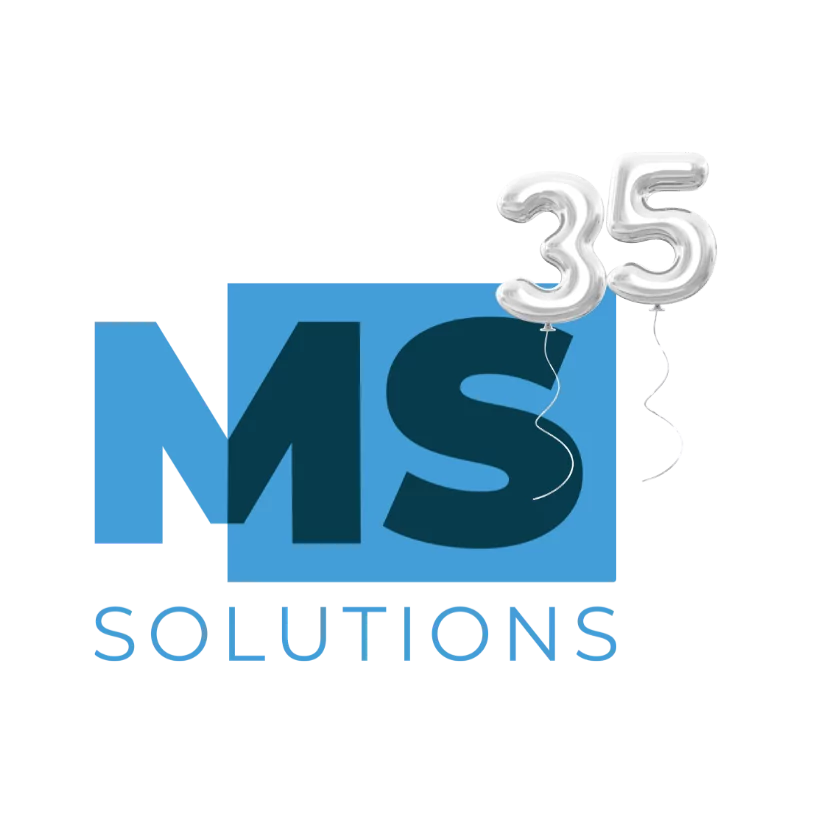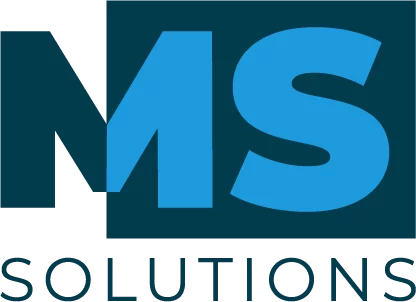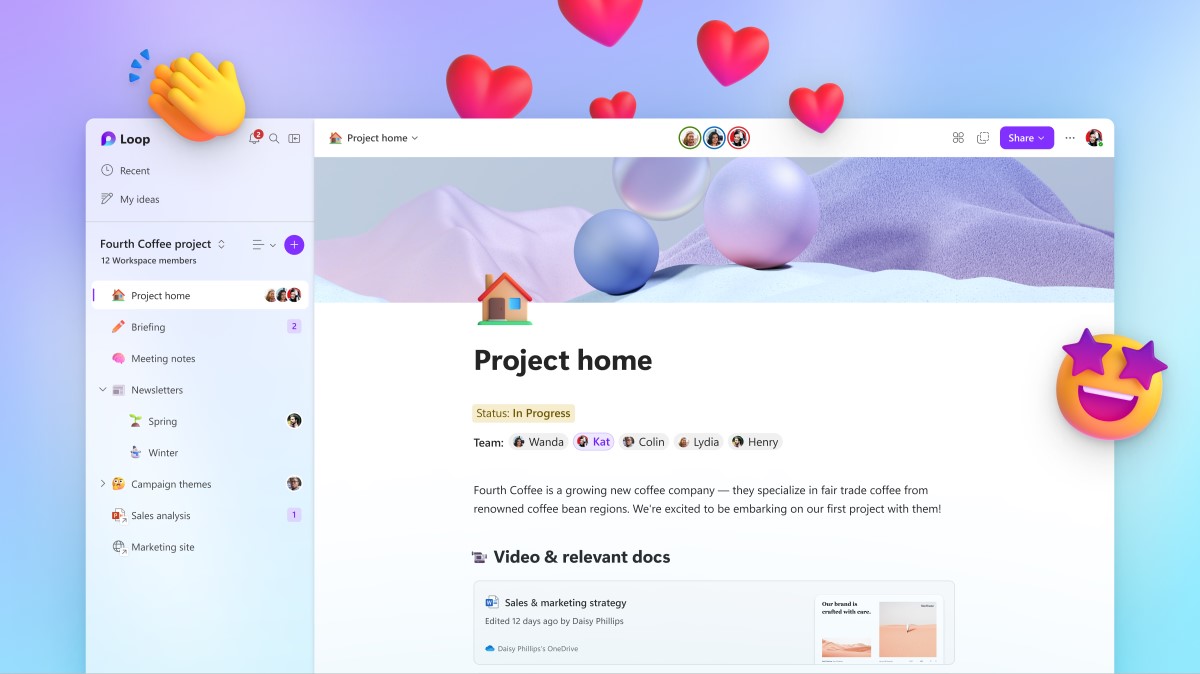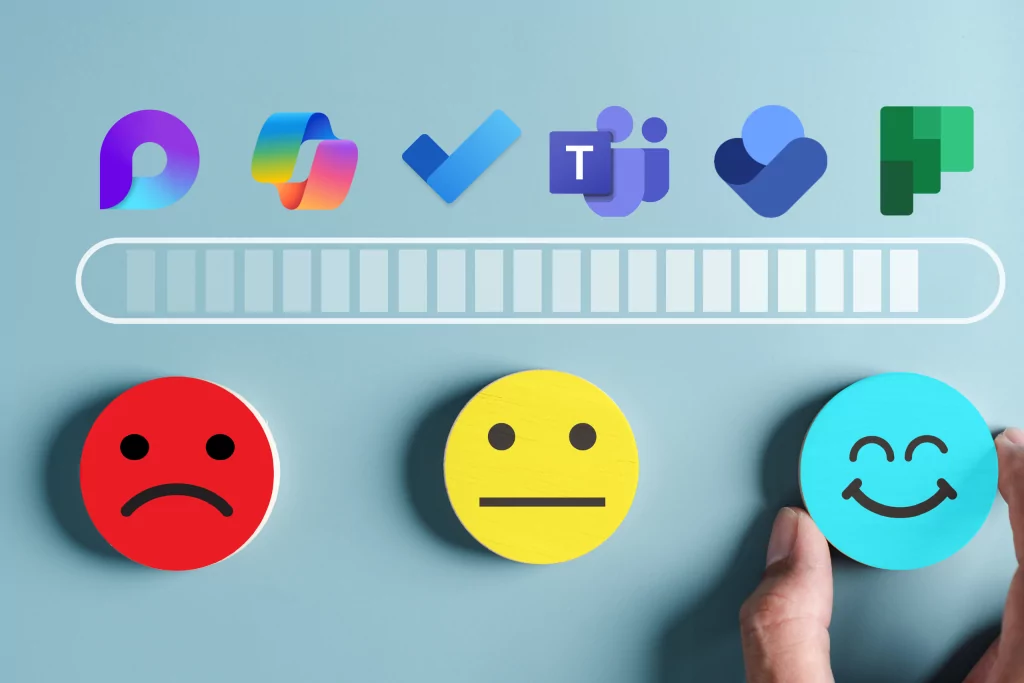The modern workplace is constantly evolving, and Microsoft is positioning itself as a leader in this transformation. At the heart of this revolution is Microsoft Loop, a real-time collaboration application propelling teams toward optimal efficiency, regardless of their geographic location. Featuring a powerful and flexible canvas, Loop introduces portable components that are truly key elements that integrate seamlessly into projects, tasks and documents, ensuring uninterrupted synchronization between team members, no matter where they are. find.
Let’s explore the world of Microsoft Loop to discover how this revolutionary application can boost collaboration within your team. Let’s dive into the benefits of Microsoft Loop for project management and understand how this innovative solution facilitates the adoption of hybrid working, thereby accelerating collaboration and innovation processes within organizations.
What is Microsoft Loop?
Microsoft Loop represents a breakthrough in real-time collaboration, allowing teams to work together on projects, tasks and documents. With its flexible and powerful canvas, combined with wearable components synchronized between applications, Loop provides freedom of movement while ensuring uninterrupted consistency. Loop components, portable pieces of content, stay in sync wherever they are shared. Loop pages are flexible canvases in the application, allowing you to aggregate people, links, tasks and data. Loop workspaces, shared spaces, make it easy to group critical elements together to track progress toward shared goals.
Microsoft Loop is designed to unify diverse projects within workspaces, providing collaboration options across the workflow, whether on a Loop page, in a chat, email, meeting, or document. This simplifies the adoption of hybrid working by accelerating collaboration and innovation. The benefits of Microsoft Loop are multiple, including real-time collaboration, easy sharing of files and information, tracking project progress, and the ability to work remotely.
Key Features
Key features of Microsoft Loop redefine real-time collaboration, providing teams with an innovative and seamless experience.
- Portable Components: Loop Components are portable pieces of content that stay in sync wherever they are shared, enabling real-time edits for all collaborators.
- Flexible Canvases: Loop pages offer flexible canvases where you can bring people together and customize the layout with sections, columns, headers and footers.
- Shared Workspaces: Loop workspaces are shared environments that make it easy to track progress and bring together important items for a project.
- Real-time collaboration: Microsoft Loop enables real-time collaboration in the workflow on a Loop page or through conversations, emails, meetings, or documents.
- Integration with other applications: Loop components are currently supported in Teams, Outlook, Word for the web, and Whiteboard, facilitating seamless integration into existing workflows.
Licences
To access all features of the Loop app, users must have an Entra ID account and one of the following Microsoft 365 plans: Microsoft 365 Business Standard, Microsoft 365 Business Premium, Microsoft 365 E3, or Microsoft 365 E5. The Microsoft 365 E3 and E5 plans offer additional features, like creating Loop workspaces and managing members.
Use case
Let’s explore real-world examples where Microsoft Loop has demonstrated its power, transforming collaboration and driving efficiency across a variety of projects. The list below is of course not exhaustive.
- Collaborative work meetings: Loop allows you to add the agenda of a meeting beforehand in the Teams invitation. This agenda can evolve collaboratively thanks to the collaboration of other participants. Subsequently, this Loop space allows you to centralize the notes from this same meeting as well as the resulting tasks. These tasks are then assigned to the different participants in their To Do list.
- Creating a list of ideas, projects, or features: Microsoft Loop makes it easy to create shared databases for logging and sharing ideas, allowing flexible use of the “Board” component to compile, prioritize, and comment on ideas.
- Designing a company guide for new employees: Loop helps gather essential information about the company structure, using the Paragraph component to write short texts and creating onboarding checklists special.
- Brainstorming and ideation: Loop components, such as the “Voting Board,” make it easier to centralize team ideas, simplifying thinking, decision-making, and consensus.
- Quick status reporting and task tracking: Microsoft Loop enables task creation, assignment, and tracking, with features such as due dates, comments, and attachments.
- Business Process Design: Use components like “Task List”, “Board”, and “Diagram” to design custom workflows for service request management, incident management, problem management, and more.
In short
In conclusion, Microsoft Loop represents a revolution in modern work, offering innovative solutions to improve collaboration within teams. Through real-world use cases, we explored how Loop can be practically applied in scenarios such as creating a list of ideas, designing business guides, brainstorming, managing tasks and business process modeling.
If you would like to adopt Microsoft tools, do not hesitate to contact our team of experts to obtain more information on the subject.





